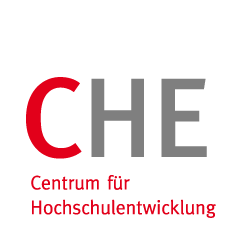 Foto: Pixabay / Dolf Maurer
Foto: Pixabay / Dolf MaurerIn some federal states of Germany, dual students can choose between studying at a university or a vocational academy (Berufsakademie). These two institutions differ in several respects, including the programme length and the study options available. But they also differ in terms of student population. For example, vocational academies have a higher proportion of women than cooperative state universities (duale Hochschulen), as shown by a recent analysis conducted by the CHE Centre for Higher Education.
Around 50 years ago, the first predecessor models for dual study programmes began in Germany in the form of vocational academies. Back in 1974, for example, the study model of the first vocational academies in Stuttgart and Mannheim included periods of company-based learning alongside periods of study at the vocational academy. Today, dual study programmes have become extremely popular. And yet there are now only five federal states with vocational academies that offer traditional dual study programmes.
“For the past half century, vocational academies in Germany have been offering what many prospective learners now consider to be their top priority – a well-coordinated combination of academic theory and professional practice. Against this background, their importance for post-secondary education should not be underestimated, even though some of them have been transformed into cooperative state universities,” remarked CHE Executive Director Frank Ziegele.
Around 10 per cent of Germany’s 126,000 dual students are currently enrolled at a vocational academy, the majority of them in Saxony and Hesse. Compared to 2001, the student population has more than halved, falling from 28,000 to 12,000. The main reason for this decline is that vocational academies have been transformed into cooperative state universities in some federal states. Student numbers have now stabilised at a low level, and have recently even experienced a slight increase.
However, a recent analysis conducted by the CHE Centre for Higher Education shows that students of vocational academies differ slightly from their university counterparts.
Comparing the number of first-year students without a formal higher education entrance qualification (Abitur), for instance, reveals that vocational academies have a higher proportion of non-traditional applicants than do cooperative state universities (2.4 per cent compared to 1.4 per cent). In terms of age distribution, vocational academies have far more first-year students in the 23+ age groups. In addition, dual study entrants at vocational academies are found in a wider range of subjects. This subject structure may also be responsible for the higher proportion of women (51.9 per cent) than at cooperative state universities (43.6 per cent). On the other hand, the more extensive range of engineering programmes offered at cooperative state universities may be the reason for the lower percentage of women.
“Vocational academies occupy a special niche within the dual study options in terms of the social structure of their students and the subjects offered,” reported Lisa Mordhorst. “Particularly in comparison to cooperative state universities, vocational academies seem to be an attractive alternative, especially for mature students and students without Abitur,” stated the author of the “CHECK Berufsakademien in Deutschland” (CHECK vocational academies in Germany).
Together with her co-author Nicolas Reum, Lisa Mordhorst calls for the qualities of these educational institutions to be strictly maintained if the process of transforming vocational academies into cooperative state universities persists. If vocational academies are to continue to exist in a number of federal states in the future, it will be essential to further develop their profiles dynamically according to the needs of target groups, one example being the expansion of public health degrees. In this context, the primary focus should be on ensuring compatibility with other academic and vocational (further) education programmes. After all, it is not possible to pursue dual Master’s programmes at vocational academies, as is the case at cooperative state universities.
About the publication:
The CHE format CHECK provides a quick overview of a variety of topics. To obtain an overview on the topic of vocational academies, CHE evaluated current data from the Federal Statistical Office and the “AusbildungPlus” (TrainingPlus) database operated by the Federal Institute for Vocational Education and Training (BIBB). “CHECK – Berufsakademien in Deutschland” (CHECK vocational academies in Germany) was written by Lisa Mordhorst and Nicolas Reum. The entire visual content is available in graphic form in the CHE Flickr cloud.

